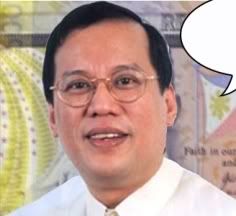
Former President Estrada was born on April 19, 1937 in Tondo, Manila to Emilio Ejercito, Sr., a former Chief Sanitary Engineer of Manila, and Maria Marcelo. He has two brothers, Antonio Ejercito (1932-2005) and Emilio Ejercito, Jr. (1928-1999). He studied at the Ateneo de Manila University but was expelled for unbecoming conduct. He enrolled at the Mapua Institute of Technology but dropped out before finishing college to pursue a career in acting.
Jose Marcelo Ejercito, better known by his screen name Joseph Ejercito Estrada or Erap, is an accomplished movie actor and producer and was the 13th President of the Philippines serving from January 20, 1997 to January 20, 2001. On September 12, 2007, he was convicted of plunder.
Dropping out of college because of involvement in a street gang, as well as the film industry, displeased his family that they forbade him from using the family name Ejercito. He used the name " Joseph Estrada" instead. As an actor he acquired the nickname "Erap" (from the reversed spelling of pare, Filipino slang for or 'buddy'). He starred in over a hundred movies and produced more than half of them. He was the first FAMAS Hall of Fame awardee for Best Actor in 1981.
In 1968, Estrada ran for mayor of the municipality of San Juan, but without any background in politics, he lost to Dr. Braulio Sto. Domingo. His camp filed an electoral protest against Sto. Domingo and was favored by the court. Estrada was proclaimed mayor of San Juan in the following year. This was the start of his sixteen-year tenure as San Juan mayor.
When Corazon Aquino assumed the presidency in 1986, all local government officials suspected of malfeasance and anomalies, Estrada included, were removed from office. He ran for senate the following year won a seat under the Grand Alliance for Democracy (GAD) party.
In 1997, after four years as the country's second-in-command, Estrada finally decided to run for president. His political strategists recognized that a large fraction of the Philippines' voting population was the “masa” and launched a camp

 aign specifically designed to woo them. Finding a leader they could identify with, the masa rallied behind Estrada and his slogan "Erap para sa Mahirap" (Erap for the poor). After the elections, Edgardo Angara was defeated by Gloria Macapagal-Arroyo for the vice presidency, Estrada won by landslide. Estrada was inaugurated on June 30,1998 in the historical town of Malolos, Bulacan. Estrada's presidency was soon marred by plunder and corruption charges. In October 2000, Ilocos Sur governor Luis "Chavit" Singson, a close friend of Estrada, alleged that he had personally given the President P400 million as payoff from jueteng – a grassroots-based numbers game, as well as P180 million from the government price subsidy for the tobacco farmers' marketing cooperative. Singson's allegation caused uproar across the nation, which culminated in the House of Representatives' filing of an impeachment case against Estrada on November 13, 2000. The impeachment suit was brought to the Senate and an impeachment court was formed, with Chief Justice Hilario Davide, Jr. as presiding officer. Estrada, pleading “not guilty”, called for two of the country's leading lawyers to his side, former chief justice Andres Narvasa and Estelito Mendoza.
aign specifically designed to woo them. Finding a leader they could identify with, the masa rallied behind Estrada and his slogan "Erap para sa Mahirap" (Erap for the poor). After the elections, Edgardo Angara was defeated by Gloria Macapagal-Arroyo for the vice presidency, Estrada won by landslide. Estrada was inaugurated on June 30,1998 in the historical town of Malolos, Bulacan. Estrada's presidency was soon marred by plunder and corruption charges. In October 2000, Ilocos Sur governor Luis "Chavit" Singson, a close friend of Estrada, alleged that he had personally given the President P400 million as payoff from jueteng – a grassroots-based numbers game, as well as P180 million from the government price subsidy for the tobacco farmers' marketing cooperative. Singson's allegation caused uproar across the nation, which culminated in the House of Representatives' filing of an impeachment case against Estrada on November 13, 2000. The impeachment suit was brought to the Senate and an impeachment court was formed, with Chief Justice Hilario Davide, Jr. as presiding officer. Estrada, pleading “not guilty”, called for two of the country's leading lawyers to his side, former chief justice Andres Narvasa and Estelito Mendoza.This was the first time Filipinos would witness, through radio and television, an elected president stand in trial and face possible impeachment. During the trial, the prosecution presented witnesses and evidence to the impeachment court proving Estrada's involvement in jueteng. The existence of secret bank accounts which he allegedly uses for receiving payoffs was also brought affront. Singson, after being offered immunity by anti-Estrada lawmakers, stood as witness against the president during the trial and said that he and the President were partners in-charge of the country-wide jueteng operations. Though his credibility has been questioned several times, the depth of Singson's personal knowledge on questionable activities of the President, drawing from reactions of the citizens, weighed more.
The impeachment trial took an unexpected turn when, on January 16, 2001, the court, whose majority were allies of Estrada, voted not to open a controversial envelope. This envelope was rumored to to contain incriminating evidence against the president and its opening would have decided the Estrada's fate right there. The prosecution panel and the officials from the opposition walked out of the court in protest of the vote. Senator Aquilino Pimentel also resigned as Senate President to signify his objection to the turnout of the proceedings. The events fueled a three-day street protest.
Gathered at the historic EDSA Shrine, the same site of the 1986 revolution that overthrew Ferdinand Marcos, hundreds of Filipinos staged rallies asking for Estrada's resignation. Students, professionals, and various civic groups took part in what came to be known as EDSA II. The number of protesters grew from hundreds to thousands in a matter of days. The rallies even reached provinces in the Visayas and Mindanao. On January 19, 2001, AFP chief Angelo Reyes joined the assembly at EDSA announcing that the 113,000-strong Armed Forces of the Philippines is withdrawing support from Estrada.

The next day, following Supreme Court's declaration of vacancy of the presidential seat, the Chief Justice swore in the constitutional successor, Gloria Macapagal-Arroyo, as the acting President of the Philippines. In the 2000 Philippine elections, though eligible to run for a second term, Estrada backed him then Vice President Gloria Macapagal-Arroyo (after initially naming Teofisto Guingona, her former senator, as her candidate), Estrada's Vice-president whose defection to the Arroyo party proved crucial to the popular revolution. This decision was unpopular among many of her core supporters, including the Roman Catholic Church. Arroyo narrowly won with just 23.58 percent of the vote, and succeeded Estrada as president on January 20, 2001.
Estrada is married to psychiatrist-turned-senator Luisa "Loi" P. Ejercito-Estrada and has three children with her: Jinggoy (a Philippine senator), Jacqueline, and Jude. His child out of wedlock, JV Ejercito (from socialite Guia Gomez), also entered politics and is the present mayor of the San Juan president estrada is a prisoner for a several years.
INTRIGA TRIVIA;
ERAP ESTRADA IS THE FIRST PRESIDENT TURNED PRISONER THEN TURNED PRESIDENTIABLE AGAIN!
VIDEOS COURTESY FROM YOUTUBE;















No comments:
Post a Comment